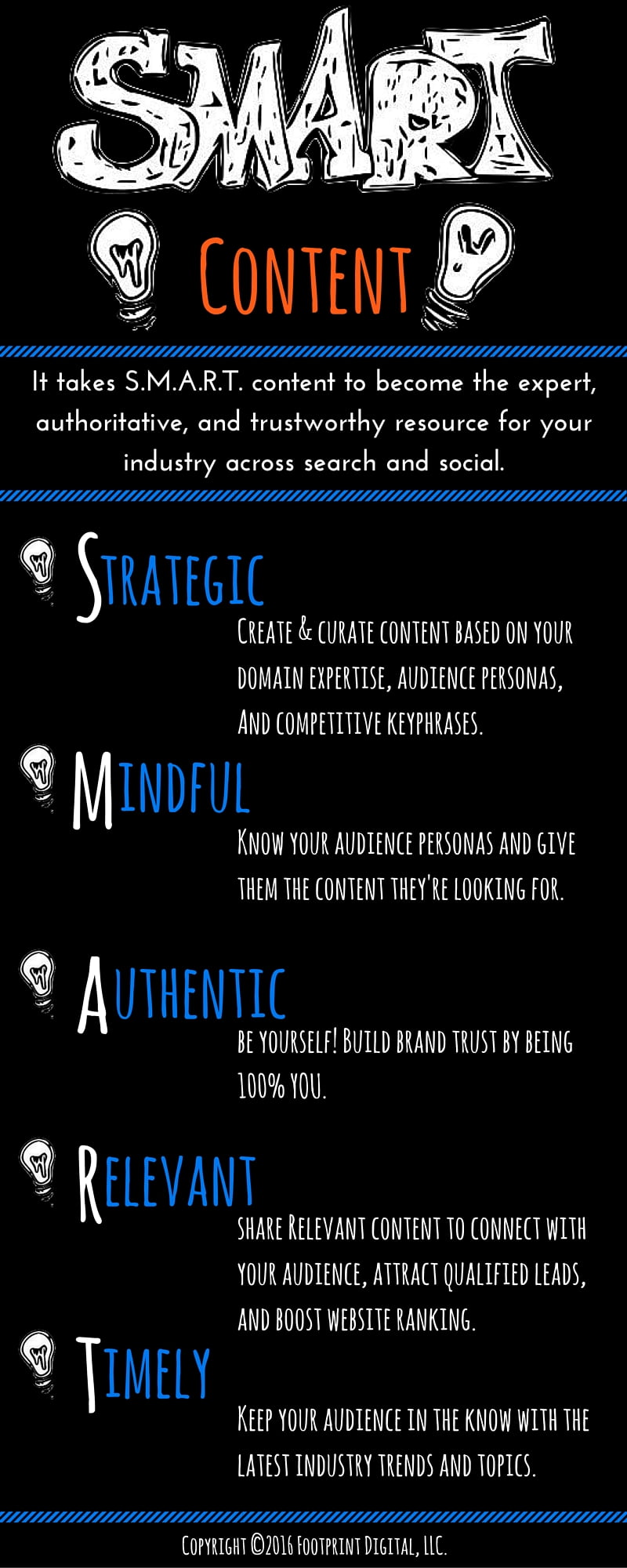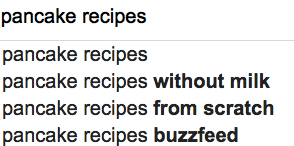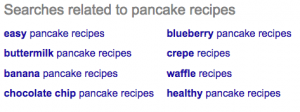How To Win On Search & Social With S.M.A.R.T. Content
Your piece of content is one out of 60 trillion individual webpages indexed by Google.
The average odds of winning the Powerball are 1 in 175,223,510.
That means you are 341 times more likely to win the Powerball than find your piece of content on Google.
Winning the lottery is easier than finding your content.
There are 350,000 Tweets sent per minute, 500 million Tweets per day, and around 200 billion Tweets per year!
There are more than 250K unique LinkedIn longform posts published every week to an audience of over 400 million.
What else is killing content?
In a recent post by Joe Pulizzi, he recalled a workshop he led on content marketing for about 50 small-business CEOs and managers across a wide spectrum of industries.
Pulizzi noted a common sentiment among all the participants…
No one was happy with their content marketing efforts.
Some of their complaints ->
- Blog posts have poor traffic and conversions.
- Newsletters aren’t opened.
- Customers ignore them on social media.
- Search engine rankings are poor.
Well, Joe had enough. He promptly stopped his presentation and asked the audience:
“Is the content you are creating and distributing for your customers any different than anything else out there?” ~ Joe Pulizzi
If this question gives you pause…good.
There is no sense in creating content for content’s sake. Churning out content with no regard to your audience is a waste of time and money, and may do more harm than good.
With these stats and sentiments, what should we be doing with content?
Pulizzi’s advice ->
Create the minimum amount of content with the maximum amount of behavior change in your customers.
Think about your audience…your social sharers and your buyer personas.
What kind of content will your audience care about? (click to Tweet)
They will care about smart content.
S.M.A.R.T. Content
It takes S.M.A.R.T. content to become a recognized expert, authoritative, and trustworthy resource for your industry across search and social media. Creating and curating content readily found and eagerly shared by your audience personas takes a thoughtful and methodical approach.
What exactly makes content smart?
There are 5 key ways to make your content S.M.A.R.T. ->
STRATEGIC: Create and curate content based on your domain expertise, audience personas, and competitive keyphrases.
MINDFUL: Know your audience personas and give them the content they are looking for.
AUTHENTIC: Be Yourself! Build brand trust by being 100% YOU.
RELEVANT: Share relevant content to connect with your audience, attract qualified leads, and boost website ranking.
TIMELY: Keep your audience in the know with the latest industry trends and topics.

Search
Everyone wants stellar search engine ranking, but so few experience that first page glory. Winning at search requires a dynamic and agile strategy to keep up with Google’s ever-changing algorithms and the overwhelming amount of content.
It’s not impossible to rank well. But it’s impossible to rank well without understanding and implementing these 3 core components:
- Content Quality
- Keyword/Keyphrase Research
- Semantic Search
1. Content Quality
Let’s begin by taking a look at Google’s Search Quality Evaluation Guidelines, released in November 2015. These guidelines were created to assist Google’s Search Quality evaluators rate search engine quality around the world.
Google’s Search Quality Evaluation Guidelines detail what makes a webpage rank as high or low quality, and how content should be created for search engines.
Google’s ever-evolving algorithms reward those high-quality pages, giving original, long-form, purposeful content increased search rank.
The new guidelines have a new acronym for what every high-quality page needs:
E.A.T. -> High Level Of Expertise, Authoritativeness, Trustworthiness
“High quality pages and websites need enough expertise to be authoritative and trustworthy on their topic.” Sec 4.3 of the Guidelines
Your expertise must be clearly communicated to your audience personas throughout their brand journey. “Experts” must demonstrate formal expertise on specific topics such as:
- Medical advice should come from those with appropriate medical expertise or accreditation, and should be professionally written, edited, reviewed, and updated on a regular basis.
- Financial and legal advice should come from industry experts and be maintained and updated.
- Advice and hobby pages that affect someone’s lifestyle, such as home remodeling, parenting issues, learning a musical instrument, should also come from expert writers.
The guidelines point out that some topics require less formal expertise.
“Ordinary” people may be considered experts in topics where they demonstrate relevant life experience. Google calls this “everyday expertise.” Sharing personal experience is a type of everyday expertise. This type of expertise can be valuable to certain audience personas at various stages in the sales cycle.
Some content is subject to Google’s highest quality standard of web pages. Pages that could potentially impact the future happiness, health, or wealth of users are called “Your Money or Your Life” pages, or YMYL (Sec. 2.3).
Examples of YMYL pages include:
- Shopping or Financial Transaction Pages: Purchases, money transfer, bill payments.
- Financial Information Pages: Investments, taxes, retirement planning, real estate, financing education, insurance.
- Medical Information Pages: Health, drugs, specific diseases or conditions, nutrition.
- Legal Information Pages: Child custody, divorce, writing a will, citizenship, real estate.
Google places high page quality rating standards for YMYL pages because low quality pages have the potential to negatively impact users’ well-being.
Creating content with a high level of E.A.T. takes time, effort, and skill.
Before you sit down with you laptop, answer these questions:
- Who are the experts who will write about the topic?
- What makes you trustworthy for the topic?
- Does your website clearly demonstrate topic authority?
Once you honestly answer these questions, we can move on to the next core component.
2. Keyword/Keyphrase Research
When a person enters a keyword or phrase into search, search engines return only those results relevant to the search query, and ranks those results according to the popularity, or quality, of the websites containing the relevant information.
Relevance and popularity are determined by algorithms, made up of hundreds of variables known as “ranking factors.”
Keyword usage is a highly influential ranking factor.
The ideal keywords and phrases for your website’s content must meet 3 criteria:
- High Search Volume: How popular is your targeted keyphrase? People have to be searching for your keyphrases!
- Low Competition: Is your page powerful enough to compete for your targeted keyphrases?
- Relevance: Solve the problems and answer the questions of your audience personas.
High search volume is an indication of keyword popularity. The more popular the phrase, the more people are searching for it.
But before you go off and choose the most searched keywords, keep in mind that those popular keywords will also be highly competitive.
Popular keywords with large search volume are usually reserved for very high Domain Authority sites and will be very difficult to compete against.
Domain Authority (DA) is a score based on a 100-point scale developed by Moz. This score predicts how well your website will rank on search engines.
Want to check out your DA? Download the MozBar. This free web tool provides access to several valuable SEO metrics.
You use DA when comparing your site to another, or following the “strength” or power of your website over time. The greater your DA score, the more likely you are to have strong website traffic and high rank.
So what’s the sweet spot?
According to Moz’s The Beginner’s Guide To SEO, those popular keyword searches make up less than 30% of the searches performed on the web. The remaining 70% is “long tail” keyword search. While long-tail queries contain less-searched keywords and phrases, they bring in the majority of search volume.
Long-tail keyword search is more about relevance than popularity. This is where you want to focus your energies. Relevant content will organically gain popularity over time – relevant long form content.
Long form content naturally ranks for long-tail search queries. Content that answers longer search queries is more likely to rank and ultimately, draw more audience to your site. Moz investigated what kind of content gets links back in 2012. They found a correlation between word count and backlinks:
Long form content has a better chance of attracting backlinks than short form content.
Another bonus? Long form content often converts better, because they often answer the questions of those further down the conversion funnel ready to take action!
3. Semantic Search
Google has evolved to become a semantic search engine: connecting visitors to webpages with the meaning they are looking for, not just the keywords and phrases typed into the search box.
In Moz’s 2015 Search Engine Ranking Factors Report, keywords and content-based metrics were the third highest influential ranking factor. The evolution of semantic search will only enhance their influence on SEO.
To adapt to semantic search, you need to target broader topics, not just the specific keyphrase you want to use.
Think of semantic search as a conversation with the user.
You still create content around the keywords and phrases relevant to your audience personas, but you also include the semantically related things they might be searching for.
Let’s look at an example:
Start typing in your target keyphrase into Google. See how you get related phrases in the drop down as you type?
You can also type in your query, hit enter, and at the bottom of the results page you will also see the semantically linked phrases:
When we write our article on pancake recipes, we could include some of these semantically related ideas into the post.
Our post not only answers the original query that brought the visitor to the page, but also gives them knowledge about semantically related phrases.
Ideally, the specific keywords and semantically related phrases are buyer-related phrases! When you add more meaning in your content, you increase relevance, credibility, and trust for your specific keyphrases and semantically linked phrases. And that means converting a visitor into a client!
Social Media
Your efforts to produce S.M.A.R.T. content doesn’t stop with hitting the publish button and hoping Google sees your post.
Sharing is just as critical as producing.
What good is your S.M.A.R.T. content if no one knows about it?
And it’s more than just sharing your content. It’s sharing relevant content from authors and sources that support your original work.
Keep in mind that social sharing is a powerful way to enhance search ranking. Social referrals back to your website can boost web traffic and site ranking. With better ranking, your audience has a better chance of finding you on the first page of search.
Social sharing can also catch the attention of other bloggers and high DA sites. Earned backlinks are a another rank booster.
Smart social sharing begins with understanding this:
Share the right message, to the right audience, at the right time. (click to Tweet)
A social post doesn’t have to go viral to be successful. A S.M.A.R.T. social post can connect with one person and make a huge impact for your business or personal brand.
S.M.A.R.T. Content For Twitter
Let’s dive into S.M.A.R.T. content curation and customization for social sharing on Twitter.
Writing Tweets that get attention begins with a solid foundation and adding key elements to personalize each Tweet.
Step 1: Lay down the “bones” of your Tweet.
The “bones” of your Tweet are the foundation of your social post. Change up the variety in your social sharing to keep your audience interested:
- Headlines: Captivating headlines are always Tweet winners. Don’t be afraid to tweak the headline. Just remember to respect the author and your audience when you do.
How-To Guide -> #GrowthHacking For #Mobile #Apps https://t.co/tchJvfeSqV @sujanpatel via @MKTGInsiders pic.twitter.com/aOPpsa8ZWZ
— Robert Moore (@MediaLabRat) February 8, 2016
- Quotes: Quotes just begged to be shared! Always give credit to the author. Bonus points for creating your own quote image!
"Only the leaders are going to survive in the future."@briansolis #H2HChat pic.twitter.com/rFEAc5D6IM
— Bryan Kramer (@bryankramer) February 8, 2016
- Stats: Numbers catch the reader’s eye in text and in images. Make sure you include a link to your stat resource.
New Research Reveals Success Tactics of Top Bloggers: https://t.co/KxyejLsS9G ⬅ Average post takes 2.5+ hours pic.twitter.com/zby31zFy8H
— Orbit Media (@orbiteers) February 4, 2016
- Tips: Demonstrate your domain expertise by sharing a tip Tweet.
Your brand/biz is what you do, your reputation is what people remember/share https://t.co/4gGJAqu0SD #RonR #NoLetUp pic.twitter.com/pz5JcGYZzh
— Ted Rubin (@TedRubin) November 10, 2015
- Comment/Opinion: Sharing your opinion can help or harm. Think twice before you Tweet. Be clear about what you want to say and prepare to backup your comments.
Step 2: Add some muscle:
Strong directives pack a literary punch. Flex your Tweet muscles using powerful calls to action. Try using a special character or emoji for visual impact:
- MUST Read!
- Powerful Tips 💪
- Smart Advice via @handle
- Don’t Miss This ☞
- Listen!
- Bookmark ->
Listen! #Podcast -> How To Make Your #Analytics Matter w/ @crestodina & @FeldmanCreative https://t.co/9hXbDmh01I pic.twitter.com/oYTvOlrJon
— Jessica E. Roberts (@connect2life) February 3, 2016
Step 3: Have a little heart:
Why do you click on some Tweets and pass on so many others? Persuasive words and phrases that trigger emotions can enhance engagement.
- Inspiring
- Secret
- Confidential
- Have You Heard?
- Surprising
- Best
- Worst
- Magical
- Remarkable
- Strongly Recommend
The Secret to Developing a Regular #Writing Habit from @jeffgoins https://t.co/NGIJ9E6Dv7 pic.twitter.com/XSOTnNKTaD
— Spin Sucks (@SpinSucks) February 6, 2016
Step 4: Keep it neat and sweet:
Keep your Tweet looking shiny with shortened links. Don’t overlook this simple, yet effective tactic to writing a top Tweet.
Here are a few URL shortener and link management platforms:
- Bitly
- Google URL Shortener
- Ow.ly via Hootsuite
- Tiny URL
Step 5: Give credit:
Share @handles of the author and content source. Content creators work hard and deserve a shout out. They will appreciate it!
Great Book List -> On #Writing & Advice From #ErnestHemingway http://bit.ly/1nL49Z2 @ginidietrich via @SpinSucks
Step 6: Show them some eye candy:
Visuals are KEY to successful social sharing! With so many options available to share visuals, there’s no excuse to leave your audience without some tasty eye candy:
- Images
- Branded Images
- Infographics
- Video – YouTube, Vimeo, Vine
- Live Streaming Video
- Coming Soon – GIFs
The #SocialMediaSUCKS Show w @JAYBAER! #HugYourHaters! w/ @sebrusk https://t.co/LsxLsIqdtp #blab pic.twitter.com/A9ZIXMm3xA
— Jay Baer (@jaybaer) February 2, 2016
**Caution – When sharing media that isn’t yours, don’t forget the source link and tag the author and/or source for good measure. Copyright, fair use, creative commons, and public domain are tricky online. Do your homework.
Still not sure? Ask for permission or find another media source.
Step 7: #Hashtag Tips & Tricks:
Hashtags make your Tweets discoverable to your audience. You can usually find at least one relevant hashtag for your Tweet.
Hashtag strategies are just as diverse as Tweet writing strategies. Here are 3 quick tips:
- Keep it to 1-3 hashtags/Tweet.
- Use caution with trending tags – make sure it’s “on-brand” and relevant to your audience.
- You can add a string of hashtags at the end of a Tweet. To save characters, work them into the text of the Tweet.
#Influencer #Marketing: 10 Strategies for Getting It Right – https://t.co/YST8iw0jDs pic.twitter.com/VMGE0cDISx
— Michael Brenner (@MKTGInsiders) February 8, 2016
Step 8: Spelling & Grammar:
Here’s where you can be a little looser with your spelling and grammar. Use abbreviations, acronyms, and symbols to save space and make your Tweets a little less formal, yet still professional.
- With = w/
- Because = bc
- Between = btw
- And = &
- Favorite = Fav
- Through = Thru
- Tonight = 2nite
- Today = 2day
Snapchat is quickly becoming my fav! https://t.co/c8y49EpGxb
— Joel Comm (@joelcomm) February 17, 2016
Key Takeaways
Here are key takeaways for you to start creating and sharing S.M.A.R.T. content!
Search:
- Focus on relevance, not popularity.
- Create LOTS of relevant long form content for:
- Better Rank
- Better Conversion
- Better Backlinks
- Learn what keywords and phrases you can compete on.
- People have to like your content before Google does.
- Google ranks pages, not websites.
Social:
- Sharing your content is just as critical as producing it.
- Share relevant content from authors and sources that support your original work.
- Social sharing is a powerful way to enhance search ranking.
- Share the right message, to the right audience, at the right time.
- A S.M.A.R.T. social post can connect with one person and make a huge impact for your business or personal brand.
Did you find these tips for creating S.M.A.R.T. content for search and social?
Leave a comment below or reach out to us. We’d love to hear from you!




Thanks, Jessica, for a pretty comprehensive post. I especially like your acronym, S.M.A.R.T. STRATEGIC
MINDFUL
AUTHENTIC
RELEVANT
TIMELY
When writing, I like a mental checklist to perform any last-minute omissions. Awesome!
Thank you, Michael! I also like to keep a few handy checklists so I stay on track and focused. This one definitely helps me when creating content for search and social.
Great guidelines Jessica, thanks. 🙂
Thank you, Katarina!